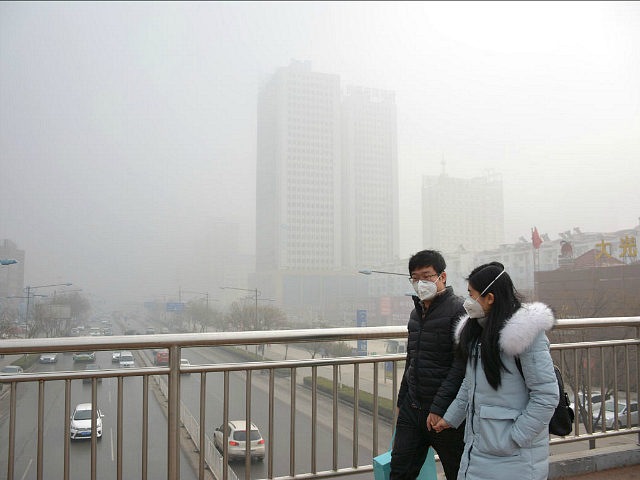The People’s Daily congratulates President Trump and also gives America a backhanded slap in an op-ed about the glories of Chinese infrastructure, which it strongly advises Trump to emulate.
On January 20, 2017, Donald Trump became the 45th President of the United States, a stunning accomplishment for the Washington outsider. Millions of ordinary American workers left behind in the modern economy placed their faith in Trump to revive the country and with that the narrative of America changed from one of exceptionalism to one of despair and decline.
Part of this new dark narrative centers on America’s crumbling infrastructure. In his inaugural speech, Trump said America’s infrastructure has fallen into disrepair and decay. His claim is backed by data. The report card by the American Society of Civil Engineers, which is released every four years, gives American infrastructure an overall grade of poor. The organization argues that infrastructure is critical for long-term economic growth and estimates that $3.6 trillion in investment is needed by 2020.
Trump wants to invest $1 trillion in infrastructure all across the nation to accelerate economic growth and increase productivity gains, but he has no clear plan on how to finance and carry out the proposed project.
This is followed by chest-thumping about how China “wins hands down” when it comes to infrastructure, which America has supposedly lost the capacity to design and engineer.
“China’s economic success is testament to the advantages of its system and to Chinese ingenuity, and infrastructure is one of the nation’s strengths. Because the Chinese government is more involved in the nation’s development, leaders can plan, finance, and carry out very ambitious projects in a relatively short period of time,” the People’s Daily claims.
It brags about Chinese designs for “megacities with populations that will be larger than some countries’ populations,” while conveniently failing to mention the megacities inhabited by no one. It also does not mention how the urban-planning splendor of some Chinese cities is difficult to appreciate through the billowing clouds of smog.
Chinese “government involvement” involves a level of ruthless disdain for citizens that is simply impossible, and decidedly undesirable, for any Western leader. When Beijing wants to build, say, a gigantic alien-seeking radio telescope, it simply herds the peasants out of their property like cattle.
The People’s Daily also praises the wonders of urbanization, portraying cities as the “concentration of power and wealth,” which is the opposite of the conclusion many Americans are reaching. Building empty skyscrapers and waiting for them to suck the populace out of the hinterlands like magnets doesn’t work very well over here. Contrary to their boasts, it did not work all that well in China, either, which is why Beijing had to use various carrots on sticks to herd peasants into their new megacities.
Some of China’s infrastructure binge amounted to classic “Broken Windows fallacy” make-work, creating the illusion of a super-vibrant economy by ordering people to engage in ostensibly productive activity, instead of letting the markets work their rough magic. The illusion is breaking as China just posted its weakest economic growth in 26 years.
As it happens, China has some ideas about where American infrastructure dollars should be spent:
China has something that America badly needs: infrastructure. However, protectionist trade policies toward China would do little to achieve the goal of reviving America, according to an analysis by Stratfor. The $1 billion-dollar Vista Tower, a condominium and hotel skyscraper under construction in Chicago, is being jointly developed by Chicago-based Magellan Development Group and China-based Wanda Group. The tower represents the largest real estate investment by a Chinese firm in Chicago and one of the largest in the U.S., according to the Chicago Tribune.
The tower also represents the mutual benefits of the China-U.S. economic relationship. The two largest economies in the world will need to find a sweet spot in this highly interdependent relationship, and infrastructure could be a golden opportunity for both sides to leverage each other’s strengths for the benefit of both sides.
Thanks for the advice, but one suspects President Trump has other ideas about who is going to rebuild U.S. infrastructure.

COMMENTS
Please let us know if you're having issues with commenting.